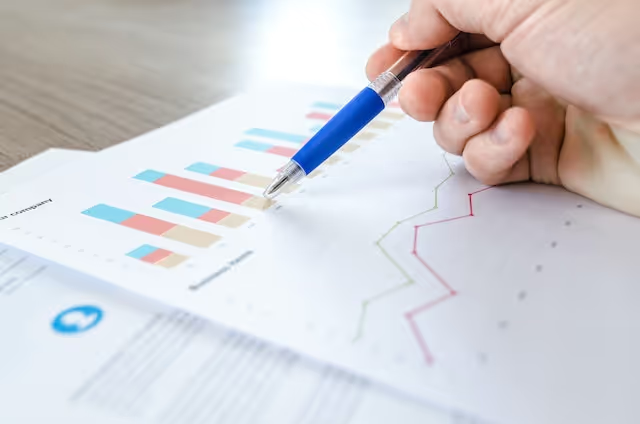ABC Data Collection: Definition & Examples
ABC data works by adults gathering as much data as possible over a period when the behavior occurs.


What is ABC data collection?
When speaking about ABC data collection in Applied Behavior Analysis (ABA) therapy, the "ABC" refers to the context of a behavioral event, and it helps to describe the events that occur before and after a behavior that is being dealt with. The terms that "ABC" stands for are as follows:
- "A" - The antecedent
- "B" - The behavior
- "C" - The consequence
How does ABC data collection work?
ABC data works by adults gathering as much data as possible over a period when the behavior occurs. Then, professionals can view the data and pinpoint certain patterns that the data has revealed to be able to provide solutions and methods to help fix the undesired behavior.
ABC data collection examples
Here is an example of how ABC data works and the process you need to do to successfully collect ABC data.
Scenario: Shane has a habit of banging his head on the floor, and his parents are not sure what causes him to do this.
Once the behavior, in this case, banging his head on the floor, is acknowledged, then the professional and Shane's parents can begin collecting the data necessary to try and find a solution. This is when the data needs to be collected.
Day 1
The data that Shane's parents collect on day 1 are:
- "A" Antecedent - Shane was placed in the living room to play alone while his mother cooked dinner.
- "B" Behavior - Shane starts to bang his head on the floor.
- "C" Consequence - His mother came into the living room and picks Shane up to stop him from hurting himself.
Since this was the first day that his parents wrote down the data about Shane banging his head on the floor, the reason why he was doing this might not be clear. They could make assumptions, but they need to collect more data to find a real pattern.
Day 2
The following is the data that Shane's parents collected on the 2nd day of observation:
- "A" Antecedent - I left Shane sitting at the table to go start cooking dinner.
- "B" Behavior - Shane starts to bang his head on the floor.
- "C" Consequence - His mother came in and picked Shane up to keep him from hurting himself.
When the professional looks at this data, they notice that there is a pattern developing. They noticed that on both days, Shane was alone when he started banging his head on the floor, and in both instances, he was picked up by his mother so he couldn't hurt himself.
However, is this enough data for the professional to definitively figure out why Shane does this behavior?The professional asks Shane's parents to get another day's worth of data to see if the pattern holds.
Day 3
Here is the data Shane's parents collected on day 3:
- "A" Antecedent - Shane was playing in the living room while his father watched him.
- "B" Behavior - Shane starts to bang his head on the floor.
- "C" Consequence - His mother came into the living room and picks Shane up to stop him from hurting himself.
When looking at this data, the professional notices that Shane still banged his head on the floor even though he wasn't alone. Therefore, this might not be the cause. So, he asks the parents what else was going on at the time the behavior occurred.
It's important to always keep collecting data if there are still questions to get the best overall answer to the behavior's cause. The more data you have the more accurately you can determine the "A" of the ABC-collecting data better and the "C" that has been influencing the behavior.
How do you make ABC data?
There are different ways for professionals and parents to collect ABC data. For instance, you can use various ABC data sheet templates that will allow people to collect the data that is required. It is important to gather as much ABC data as possible before trying to pinpoint a full pattern unless it is obvious.
How much data do you need to collect?
When it comes to the amount of data needed, there isn't a magic number that anyone can give you. This is due to the amount of data needed to find a pattern will depend on circumstances and the behavior that is being monitored.
For instance, depending on the behavior, the behavior might not occur but every other week or so. Therefore, it might take longer to find a pattern than with a behavior that occurs daily.
Recent News
Related articles

Working With Autistic Children: 10 Career Options
Want to work with autistic children? Here are 10 career options for you to consider.

What Is The Age Limit For ABA Therapy In Indiana?
Find out what the age limit is for receiving Applied Behavior Analysis (ABA) therapy in Indiana.

What Is The Age Limit For ABA Therapy In Arizona?
Find out what the age limit is for receiving Applied Behavior Analysis (ABA) therapy in Arizona.

Verbal Operants In ABA: Definition & Examples
In Applied Behavior Analysis, verbal operants are a type of verbal behavior.

Token Economy: Examples & Applications in ABA
A token economy is a procedure that was developed to help reduce maladaptive behaviors and increased desire behaviors by providing a tangible conditioned reinforcer.

Trigger Analysis In ABA: Definition & Examples
Trigger analysis is a segment of ABA therapy where children are taught by therapists to pinpoint the behaviors and emotions that happen before, during, and after an event that takes place.

Variable Ratio Schedule & Examples
A variable-ratio schedule is a random reinforcement where responses are reinforced following varied responses afterward.

Task Analysis In ABA Therapy: Examples & Strategies
Task analysis is a process of teaching that divides complicated activities into sections involving easier steps for students to more easily take.

Stimulus Equivalence In ABA: Definition & Examples
Stimulus equivalence shows how relationships can manifest among different types of stimuli in different situations.

Speech Therapy For Autism: ABA vs. Speech Therapy
ABA therapy can help individuals with speech impairments learn to better identify and utilize the language skills they already have.

Stimulus Control Transfer ABA: Definition & Examples
Stimulus control is defined as an expression used to detail circumstances where a behavior is triggered by the existence or absence of a stimulus.

Social Validity In ABA: Definition & Examples
Social validity is the acceptance of interventions concerning behavioral changes.

